
Guayusa is a tree, 4 to 10 meters tall, with a DBH of 50 to 80 cm, with evergreen leaves, native to the Amazon region, distributed in Ecuador , Peru and Colombia .
Guayusa cultivation
It is currently cultivated organically in the Amazonian provinces of Ecuador: Napo, Orellana, Sucumbíos and Pastaza, between 400 and 600 meters above sea level, at a temperature of 18 to 26 °C, in well-drained clay-sand loam soils with abundant organic material.
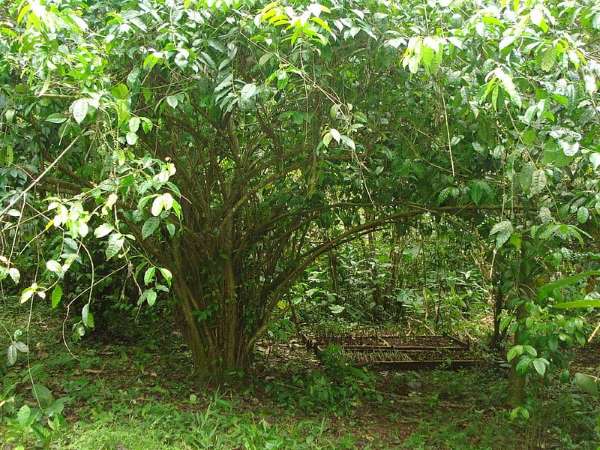
The plant is not usually found wild, but rather is cultivated, as it was apparently domesticated by the indigenous Kichwa population, and in particular by the Jibaro-Achuar ethnic group (Lewis et al, 1991).
The most used part of the plant is its leaves , which are 15 to 21 cm long and 5 to 7 cm wide (Loizeau and Barriera 2007).
The collection of the leaves begins from the third year, with two harvests a year.
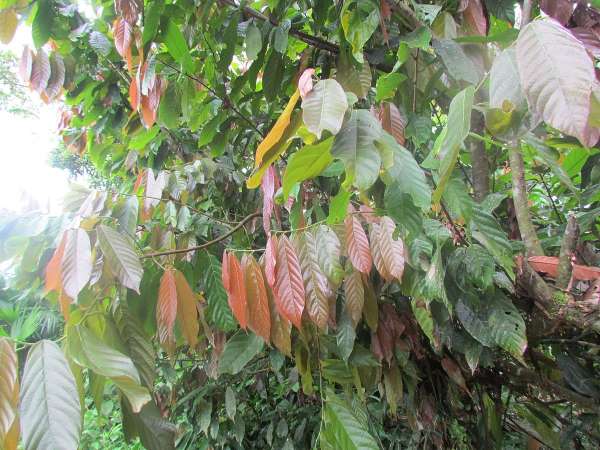
Used by Kichwas from the Amazon of Ecuador. Called waysa or guayusa. Source: Mauricio Caceres Vega [ CC BY-SA ]
Advantages of your exploitation
Some specialists, like Krauzet et al (2017), have stated that its cultivation can be An alternative to diversify Amazonian agroforestry systems, while preserving environmental sustainability, since its leaves, and their harvesting, are an activity that demands large amounts of labor, and offers good conditions for export to supply the world market for energy drinks and, consequently, for the foreign exchange generation .
The guayusa in history …
A historical review carried out by Wise and Negrín (2017) indicates that guayusa has been cultivated for centuries to use its leaves for medicinal and ceremonial purposes.
BC
Guayusa leaves were probably the object of commercial exchange with other areas, since they were found in indigenous tombs in the highlands of Bolivia , probably used as part of funerary attire, at least in the year 355 BC (Phagan 1974).
Patiño (1968) pointed out that there is a mention of guayusa in a letter from the Granada Jesuit Juan Lorenzo Lucero , dated August 23, 1683, addressed to the Viceroy of Peru.
In that letter, Lucero recounts having found the use of guayusa in 1682, by the Jíbaro Indians in the basin of the Santiago or Parossa River, a tributary on the left bank of the Marañón River.
Guayusa in Amazonian mythology
There are several myths originating from the Amazon about the guayusa plant.
According to a Kichwa myth , the guayusa was, before being a plant, a divine being that was in charge of giving people courage.
Another myth relates that before all this, after becoming a divine being, becoming a tree and being a sacred plant, he had enormous strength and great physical resistance, and was responsible for stimulating libido and preserving female fertility .
A tradition tells that a person, under the effects of guayusa, aroused his intelligence and remained in a state of alert, or vigil, throughout the night (Naranjo 2012: 99)
psychoactive substances
Alkaloids are psychoactive substances (Kvist and Moraes 2006).
The most consumed alkaloid legally in the world is caffeine, which is present in many beverages for universal consumption, generally prepared as decoctions, coffee, or infusions, tea.
The main alkaloid present in both is caffeine. It is the same case of guayusa, although not as well known as the previous ones.
Profits
The caffeine content in guayusa is 3%, a proportion similar to that of coffee or tea, but with a greater amount of antioxidants, reducers of free radicals, providing a more gradual and balanced energy , without the nervous shock that they produce other energy drinks.
In addition to caffeine, guayusa contains the alkaloid theobromine, and the amino acid L-theanine, which is analogous to glutamic acid, which produces a feeling of relaxation, increasing the activity of alpha waves in our brain .
The combination of caffeine with L-theanine is not very common, and is found in tea and guayusa leaves. This combination increases the concentration capacity of the individual , without raising his state of nervousness.
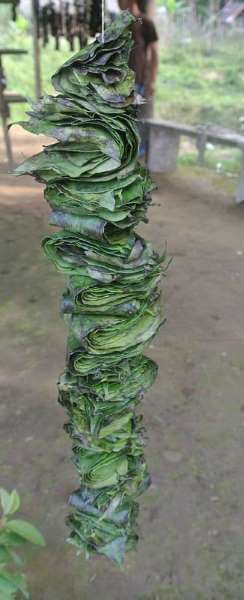
Font Dick Culbert from Gibsons, BC, Canada [ CC BY ]
folk medicine
Guayusa is a drink that has been used for at least 4,000 years for several Amazonian indigenous groups , mainly from Ecuador, Peru and Bolivia (Dickau et al 2013, Shoemaker 2014, Bennet and Alarcón 2015), being consumed as a frequent drink among members of the indigenous communities of the central Amazon (Crespo 2013, Kvist and Moraes 2006).
Guayusa for fertility
In popular medicine, guayusa is recommended by healers or shamans as a stimulant, emetic and purgative , to treat infertility problems in women (Villacís-Chiriboga 2017¸Chirif 2016), as an antidiabetic and anti-inflammatory , especially of the prostate .
As an insect repellent , antitussive and to calm muscle pain (Dueñas et al 2016).
Its most frequent use is to reduce fatigue and maintain alertness and concentration in people, and increase hunting skills (Bennet and Alarcón 2015).
Certain indications have been reported, derived from experimental tests, that the infusion of guayusa leaves can offer improvement in diabetic patients and in people suffering from cellulite (Carpintero Salvador and Salazar Enríquez 2014).
sacred plant
In the indigenous Amazonian cosmogony there are, as in all cosmogony, some sacred plants or master plants.
A master plant is a plant that teaches and predisposes to the discovery and understanding of states of spiritual consciousness to communicate with all living beings, allowing us to access the different levels of the cosmos.
Generally, these are concoctions prepared by expert shamans or healers to provoke in consumers, under expert guidance, healing or lucidity processes at a high level of sensory perception.
Several of these plants are used in the Amazon basin , generally of a psychoactive nature. Among them, coca, powdered tobacco, ojé ( Ficus spp.) , ayahuasca , guayusa.
effects
However, the effects of guayusa are mild, as they stimulate the consumer without producing hallucinations.
guayusa poisoning
The guayusa drink is commonly used among the indigenous people of the Jíbaro-Achuar groups of the Ecuadorian Amazon.
It is said that it is a drink that is consumed at dawn, while the elders communicate their traditional knowledge to the young people and tell them their myths of origin and other stories.
Melo (2014, citing Schultes 1979) points out that a cup of guayusa contains 3.3 mg of caffeine, and that in indigenous communities accustomed to its consumption they drink 2.2 liters / adult person / per day, which is equivalent to the consumption of 690 mg of caffeine, that is to say to eight cups of coffee a day, which can cause poisoning.
Purge with guayusa
Therefore, they learn to induce vomiting to cleanse their body. Guarnizo and Martínez (2009) point out that a daily consumption of caffeine between 400 and 600 mg per day, for more than two weeks, causes harmful effects to the body, such as insomnia, irritability, palpitations, anxiety.
Guayusa is used by these indigenous groups to “cleanse” the body, along with severe caloric restriction, fasting, salt restriction, to eliminate urine and other bodily secretions (Sanz-Bizet and Cañigueral 2013).
They practice the guayusa tea ceremony to teach Achuar youth to vomit to cleanse toxins from the body (Villacis-Chiriboga 2017: 83, Lewis et al 1991).
The nutritional value of guayusa
Guayusa is a plant still unknown in many aspects, such as agronomic aspects (Krauze et al 2017) and the biochemical characteristics of its components (Villacis-Chiriboga 2017). Villacis-Chiriboga et al 2017) points out that the nutritional and biochemical value of the tender leaves of guayusa is greater, because its content is reduced as the leaf matures.
Many laboratory tests have been done, the results of which diverge.
In some cases it is said that it is rich in vitamins and minerals, or that it has high proportions of caffeine and theobromine, or that it has L-theanine and chlorogenic acids (which benefit cardiovascular health).
However, in other registries, the components and their proportions are imprecise (Wise and Negrín 2019, Crespo-Calva 2018, Melo 2014, Fabara and Melo-Gallegos 2014, Radice and Vidari 2007).
caffeine content
Despite the contradictory values found in laboratory tests, it can be said that guayusa has a caffeine content of 1.7 to 3.5% of the dry weight, lower than that of the guarana leaf (Paullinia cupana ), from 2.5 to 5.0%, and that of tea (Camellia sinensis ), from 2.0 to 5%, and almost equal to that of the robusta coffee bean (Coffea canephora ), from 2.2 to 3%, and higher than that of the yerba mate leaf (Ilex paraguariensis ), which is 0.5 to 2.2%, and that of the Arabica coffee bean (Coffea arabica), from 1.0 to 1.5% (Barriga-Coronel 2017: 9).
Barriga-Coronel (2017: 10) presents a summary table on the values of three species of energy plants: guarana , guayusa and yerba mate, in units of mg/g.
| Species | Caffeine | theobromine | Total polyphenols | Chlorogenic acid | Chap. antioxidant(+) |
|---|---|---|---|---|---|
| Guarana | 39,5 | 0,30 | 8,43 | — | 3,56 |
| Guayusa | 26,0 | 0,56 | 54,86 | 24,10 | 1,54 |
| yerba mate | 19,27 | 4,84 | 13,46 | 28,00 | 1,50 |
Laboratory tests carried out by Fabara and Melo-Gallegos (2014) using fresh guayusa leaves resulted in a caffeine content of 16.64 mg/g of weight, and 0.56 mg/g of theobromine.
The researcher Villacís-Chiriboga, in an interview with the Quito newspaper El Comercio, points out that guayusa is low in fat, protein and dietary fiber, and contains 50 kcal per 100 g of dry weight, 12 g of carbohydrates, and low vitamin C, calcium and iron content.
An unattractive culinary ingredient
The tests that have been done in order to apply the extract of guayusa leaves for culinary purposes have not been very promising.
Marchán-Navas and Fuentes-Santana (2015) found, after their experience, that guayusa leaves are an ingredient that has a “very low level” aroma and flavor.
They made several culinary preparations that they submitted to tasting, which resulted in “a product with non-conformity”, and its aroma and flavor are lost in the dishes.
What does guayusa taste like?
The organoleptic profile of the guayusa leaf reflects that it has almost no odor, just a slight citrus note.
Its flavor is light and slightly sweet.
Its color is yellowish green, and its final sensation is stimulating.
The preparation of guayusa
Guayusa tea is prepared with freshly harvested leaves, in an infusion. The leaves are submerged in water heated almost to the boiling point, at an average of five leaves per cup, and allowed to stand for a few minutes (Melo 2014). The proportions are, in fact, variable, since the domestic preparation of the drink in the province of Morona Santiago is made at the rate of 4 leaves per liter of water.
Contraindications
The consumption of guayusa drink is contraindicated for pregnant women and nursing mothers.
The Peruvian vayoosa
The candoshi , indigenous group of the Peruvian Amazon , great takers of masato de yucca fermented in the masateadas, occasions in which it is customary to consume as much masato as possible, they usually take infusions of guayusa , which they call vayoosa, for emetic purposes, to stimulate nausea and cleanse the body (Surrallés 2007: 321).
The world market for energy drinks
Energy drinks do not contain alcohol, but rather stimulating substances, which are appreciated for reducing fatigue and increasing mental concentration and physical endurance. Its release on the market in the United States occurred in the 1990s.
It is a promising market worldwide, and with good growth, although it is highly controlled by multinational companies, with their brands very well positioned, offering a wide portfolio of products to a segment of consumers aged between 18 and 40 years of age ( Guzmán-Guevara and Samaniego-Pilay 2017).
The market leaders are Red Bull and Monster, and the countries with the highest consumption are mainly the United States, China, the United Kingdom, Brazil and Vietnam (Barriga-Coronel 2017, Zenith International 2012).
The raw materials of the most successful companies in this market are caffeine, guarana, taurine and ginseng, and now guayusa , rich in caffeine. This market is relatively new, and more so in Latin America, where it began to develop in 2001.
Guayusa in Ecuador
Guayusa has been used in the Ecuadorian Amazon rainforest for centuries, but it has only recently attracted the attention of researchers.
The first article on guayusa was published in Ecuador, in 1968. Since then, most of the articles on the subject touch on aspects related to the plant and its role in sustainable development and its applications in medicine (Sadali, Morocho and Garrido-Pérez 2016, Lema et al 2017, Science Daily 2014).
One of the countries that stands out in the production and export of guayusa is Ecuador .
Its first export was made in 2016, destined for the United States, Germany and the Czech Republic, from the plantations located in Archidona, Tena and Arosemena, in the province of Napo, in the Ecuadorian Amazon , where some 3,000 producers who cultivate some 6,000 hectares , with other associated crops (Villacís-Chiriboga 2017).
In the region there has been interest, for several years, in developing the production and export of the product, evidenced by the development of research for the establishment of processing companies for guayusa leaves (Montilla-Brito 2013).
What is the country that produces the most guayusa in the world?
Ecuador is currently the largest producer and exporter of guayusa in the world, although it is a marginal market, even within the energy drinks sector. In 2015, Ecuador exported 1.11 million USD, almost entirely to the US market (Barriga-Coronel 2017).
Guayusa in the Amazon context
Food is essential for life and is, basically, a total social fact, which includes the consumption, in different scenarios, occasions and motivations, of solid foods and beverages , which are edible from a biological and cultural point of view, as a result of a culturally determined choice.
In this context, drinking plays a fundamental role in social life, not only in the daily and private sphere, but also in the public sphere on different special, festive and ceremonial occasions.
The most common drinks among indigenous native communities of the Amazon basin , apart from water, there are three: masato or chicha, a fermented drink made with cassava, corn, banana or palm drupes; guayusa, a stimulating, energetic drink, resulting from the infusion of guayusa leaves; and the ayahuasca or yagé, a decoction prepared from the bark of a vine.
The three can be classified as psychoactive drinks, because they produce, when ingested, alterations in the normal functioning of the central nervous system of a person, and may cause some degree of psychological dependence.
In the urban contexts of the Amazon basin, as well as outside of it, other beverages containing alkaloids are used (nitrogenous substances from certain plants that produce physiological and psychological effects, and constitute natural stimulants), among which the best known are coffee, the tea, the cocoa , cola, mate, guayusa and guarana.
Bibliography
- Barriga-Colonel G. 2017. Determination of caffeine content in guayusa leaf infusions (Ilex guayusa Loes) under two drying conditions. Undergraduate thesis. Quito: UDLA. PDF
- Bennet B., Alarcon R. 2015. Hunting Hallucinogees: The use psychoactive and other plants to improve the hunting ability of dogs. Journal of Thropharmacology , 171, 171-183. PDF
- Carpenter-Salvador Salazar-Enríquez 2014. Source
- Chirif A. 2016. Amazon Dictionary. Lima: Rain Publishers- CAAAP. Source
- Crespo-Coello P. 2013. Guayusa: trajectory and meaning in the Sustainable Forest Management Program in the Amazon region. IICA-Ministry of Foreign Affairs of Finland. PDF
- Crespo-Calva PL 2018. Indirect determination of caffeine content in guayusa (Ilex guayusa Loes) cultivation by means of NDVI. Thesis. Agronomic Engineering. Quito: Central Coelloersity Univ of Ecuador. Source
- Dueñas JF, Jarrett C., Cummins I., Logan-Hines E. 2016. Amazonian guayusa ( Ilex guayusa Loes ): A historical and ethnobotanical overview. Economic Botany , 70, 85-91. PDF
- Dickau R., Redwood SD and Cooke RG 2013. A 4,000 year-old Shaman´s Stone cache at Casita de Piedra, western Panama. Archaeological and Anthropological Sciences , 3, 231-249. Source
- Fabara C. and Melo-Gallegos VA 2014. Composition and chemical analysis of the species Ilex guayusa Loes. Thesis. Chemical engineering. Quito: San Francisco de Quito University. PDF
- Guarnizo A. and Martinez P. 2009. Organic Chemistry Experiments. Armenia: ELIZCOM SAS Source
- Guzmán-Guevara SS, Samaniego-Pilay MD 2017. Analysis of the perception of brands in the category of energy drinks among young people and adults in the city of Guayaquil . Degree work. Marketing Engineering. Guayaquil: Catholic University of Santiago de Guayaquil. PDF
- Krauze T. et al. 2017.Energizing agroforestry: Ilex guayusa as an additional product to diversify Amazonian agroforestry systems. International Journal of Biodiversity Sciences, Ecosystem Services and Management. Vol. 13, No. 1.
- Kvist LP and Moraes RM 2006. psychoactive plants. Moraes M., Ollgaar B., Kvist LP, Borschsenius F., and Balslev H. (Eds.). Economic Botany of the Central Andes. Bolivia: Major University of San Andres. PDF
- Lema-Paguay NE, Reinoso-Galora MX, Abad-Cordero ID, Heras-Calle, TM, Radice M., Sablón-Cossío N. 2017. The market of Ilex guayusa Loes. Products, stakeholders and trends in the Ecuadorian Amazon region. MOL Z Net, 3. Doi: 10.3390/mol2nd-03-xxxx. Source
- Lewis W, Kennelly E, Wadner H, Elvin-Lewis M, Fast D. 1991. Ritualistic use of the holly Ilex guayusa of Amazonian Jibaro Indians. Journal of Ethnopharmacology , 33, 25-30. Source
- Loizeau PE, Barreira G. 2007. Aquilofoliaceae tropicales: Descrption, Illustrations, Identification, et recherche d´Information. Source http://www.ville:ue.ch/cfb.
- Marchán-Navas PP, Fuentes-Santana JH 2015. The Ilex guayusa leaf and its new proposals in gastronomy. Degree work. Licenciature in gastronomy. Guayaquil: University of Guayaquil. Source
- Melo V. 2014. Composition and chemical analysis of the species Ilex guayusa Loes. Degree work. Chemical engineering. Quito: San Francisco de Quito University. PDF
- Montilla-Brito F. 2013. Energy drinks based on guayusa. Master’s Thesis. Quito: San Francisco de Quito University. PDF
- Orange P. 2012. Myths, traditions and amazing plants. Quito: Simón Bolívar Andean University- National Publishing Corporation. Source
- Patino V. 1968. Guayusa, a neglected stimulant from the eastern Andean foothills. Economic Botany , 22(4), 310-316. Source
- Phagan C. 1974. A medicine man’s implement and olants in a thuanocoid tumb in highland Bolivia. American Anthropologist, 76, (2), 472-494. PDF
- Radice M., Vidari G. 2007. Phytochemical characterization of the species Ilex guayusa Loes. La Granja, Journal of Life Sciences. Vol. 6 (2), 3-11. PDF
- Sadali KL, Morocho PY, Garrido-Pérez EL 2016. Strategy of sustainability development. The case of Ilex guayusa Loes in the Ecuadorian Amazon. Sustainability, 8(10), 967. Source
- Sanz-Biset J., Cañigueral S. 2013. Plants as medicine stressors, the case of depurative practices. Journal of Ethnopharmacology, 145 (1): 67-76. PDF
- Schultes R. 1979. Discovery of an ancient guayusa plantation in Colombia. Botanical Museum Leaflets, 27(5-6), 143-153. Source
- ScienceDaily 2014. USES. Source
- Shoemaker A. 2014. Ayahuasca Medicine: the Shamanic World of Amazonian Sacred Plant Healing. Canada: Street Press. Source
- Surralles A. 2007. The Candoshi, 247-375. F. Santos, F. Barclay (eds.). Ethnographic Guide to the Upper Amazon . Vol. SAW. Lima: Smithsonian Tropical Research Institute/IFEA. Source
- Villacis-Chiriboga J. 2017. Ethnobotany and traditional health systems in Ecuador. Approach to the guayus ( Ilex guayusa Loes) . Ethnobiology Magazine. Vol. 15, No. 3, 79-88. Source
- Villacis-Chiribioga J., García-Ruiz A., Nieves-Baena D., Moreno DA, Meléndez-Martínez AJ, Stinco C., Jewer-Andrade L-. Leon-Tamariz F. 2017. Changes in phytochemical composition, bioactivity and in vitro digestibility of guayusa leaves ( Ilex guayusa Loes ) in different ripening stages. Journal of Science of Food and Agriculture. Vol. 98, Issue 5, 1927-1934.
- Villacis-Chiriboga, J. Diario El Comercio, Quito. 2018. 04.02. Interview.
- Wise G. and Negrín A. 2019. A critical review of the composition and history of safe use of guayusa: a stimulating and antioxidant new food. Source
- Zenith International 2012. Global energy drinks market sports ahead to $37 billion. Source

Dr. Rafael Cartay is a Venezuelan economist, historian, and writer best known for his extensive work in gastronomy, and has received the National Nutrition Award, Gourmand World Cookbook Award, Best Kitchen Dictionary, and The Great Gold Fork. He began his research on the Amazon in 2014 and lived in Iquitos during 2015, where he wrote The Peruvian Amazon Table (2016), the Dictionary of Food and Cuisine of the Amazon Basin (2020), and the online portal delAmazonas.com, of which he is co-founder and main writer. Books by Rafael Cartay can be found on Amazon.com
Related Posts
July 20, 2022

Cashew Nut (Anacardium occidentale L.): the memory ally
September 24, 2020
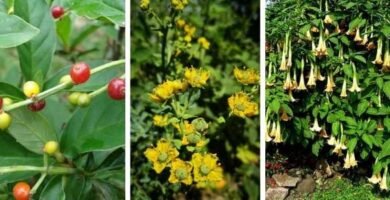
10 Amazonian Teacher Plants
September 16, 2020
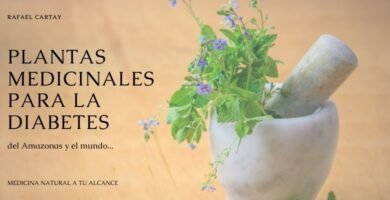
Medicinal herbs for diabetes (+20)
September 14, 2020

Purple Lantana – Cariaquito or Ayamanchana (Lantana trifolia)
August 31, 2020

Sarrapia (Diphysa punctata) origin of a powerful natural anticoagulant.
August 29, 2020

The Ayahuasca Failure Part II
August 27, 2020

The Ayahuasca Failure (Part I)
August 18, 2020
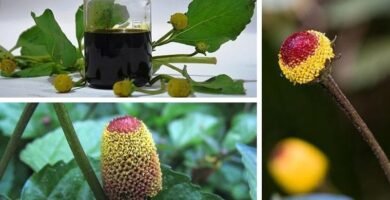
Buzz buttons (Acmella oleracea) the toothache reliever plant
March 15, 2020
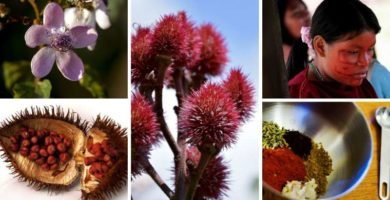
Achiote or onoto (Bixa orellana): indigenous “Seed of Fire”
This post is also available in:
![]() Español (Spanish)
Español (Spanish)
